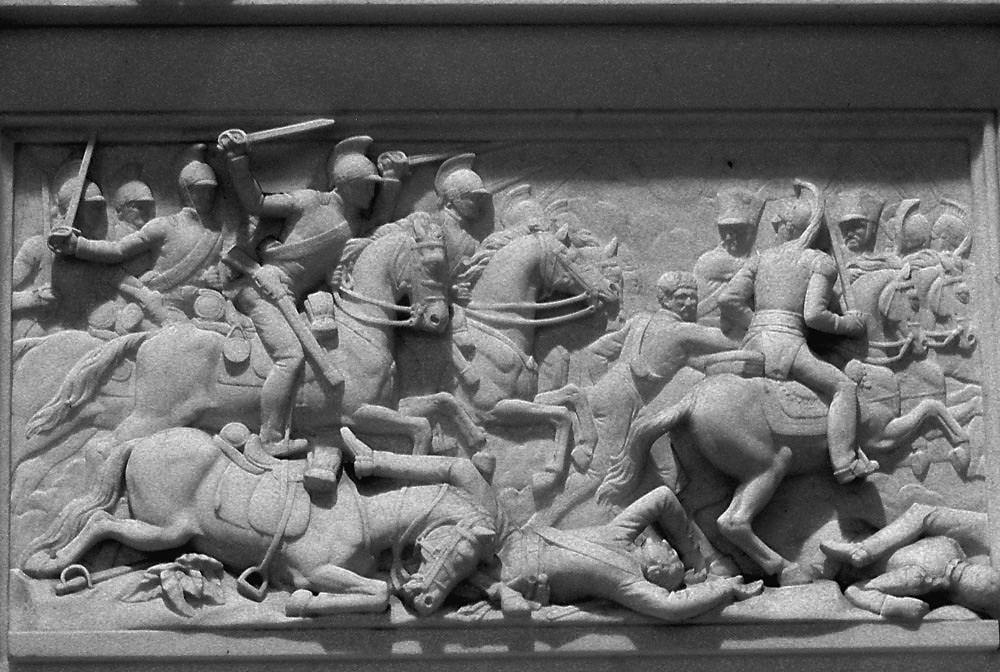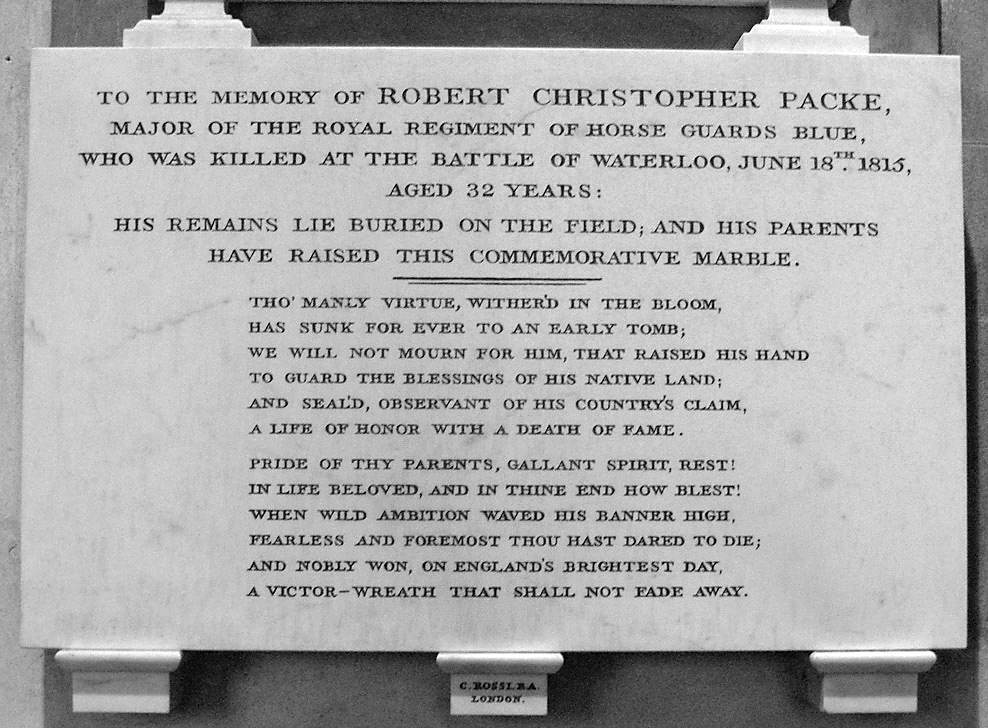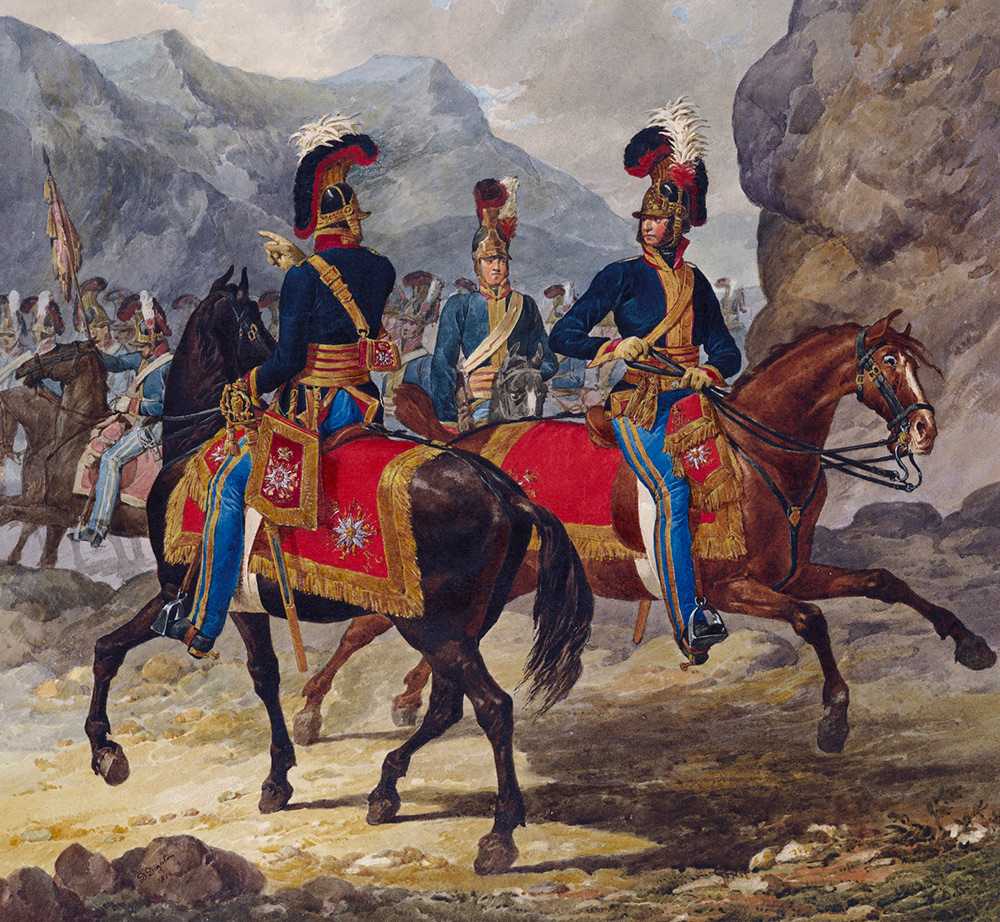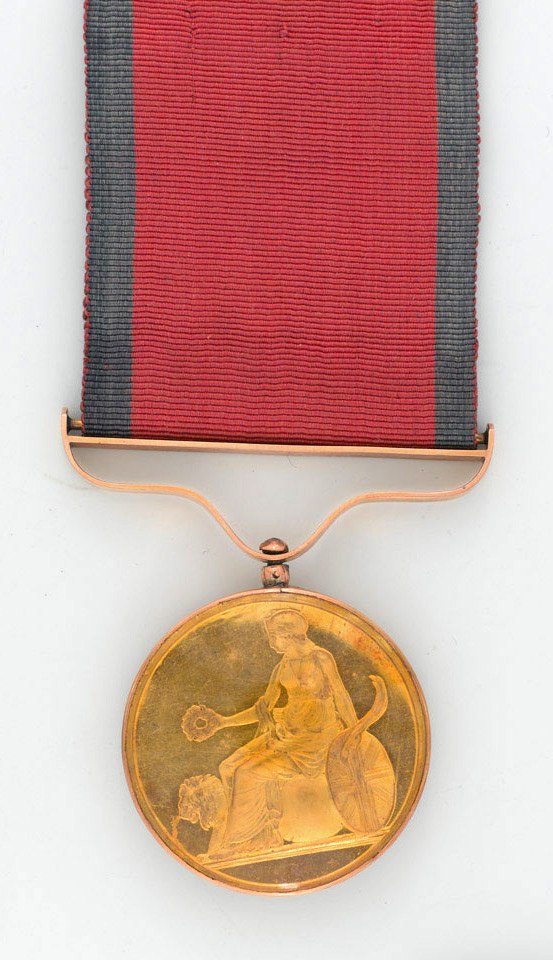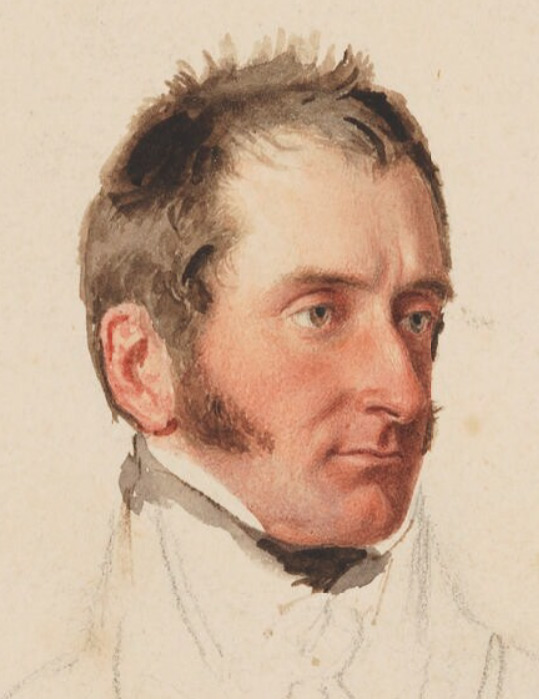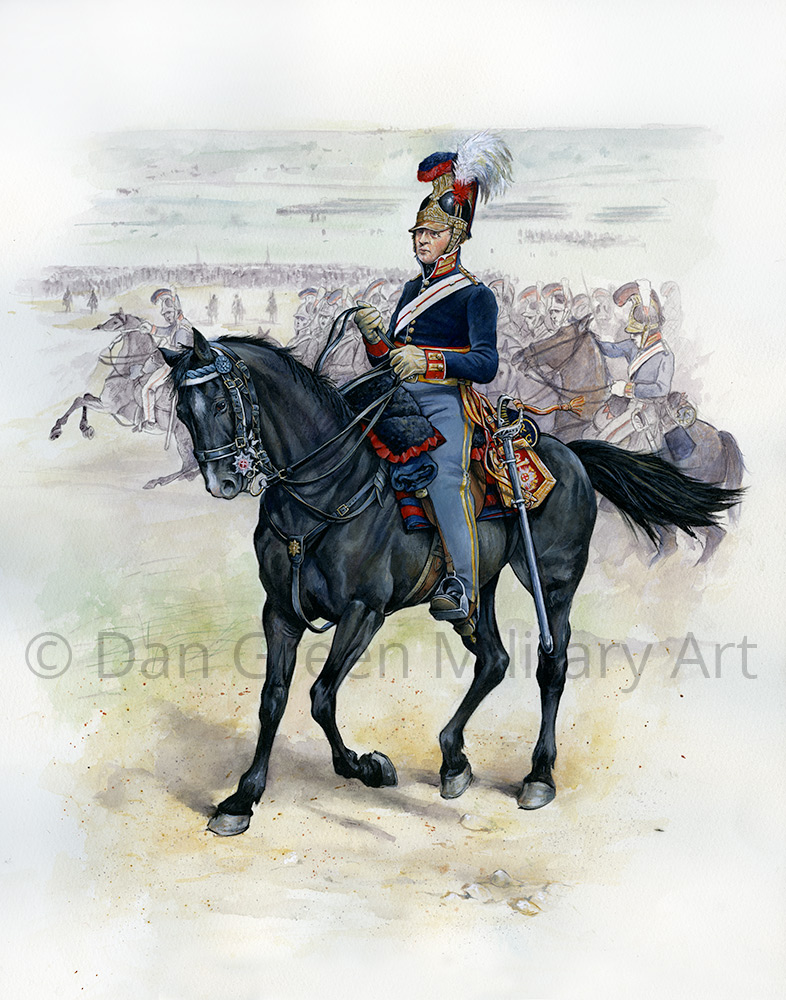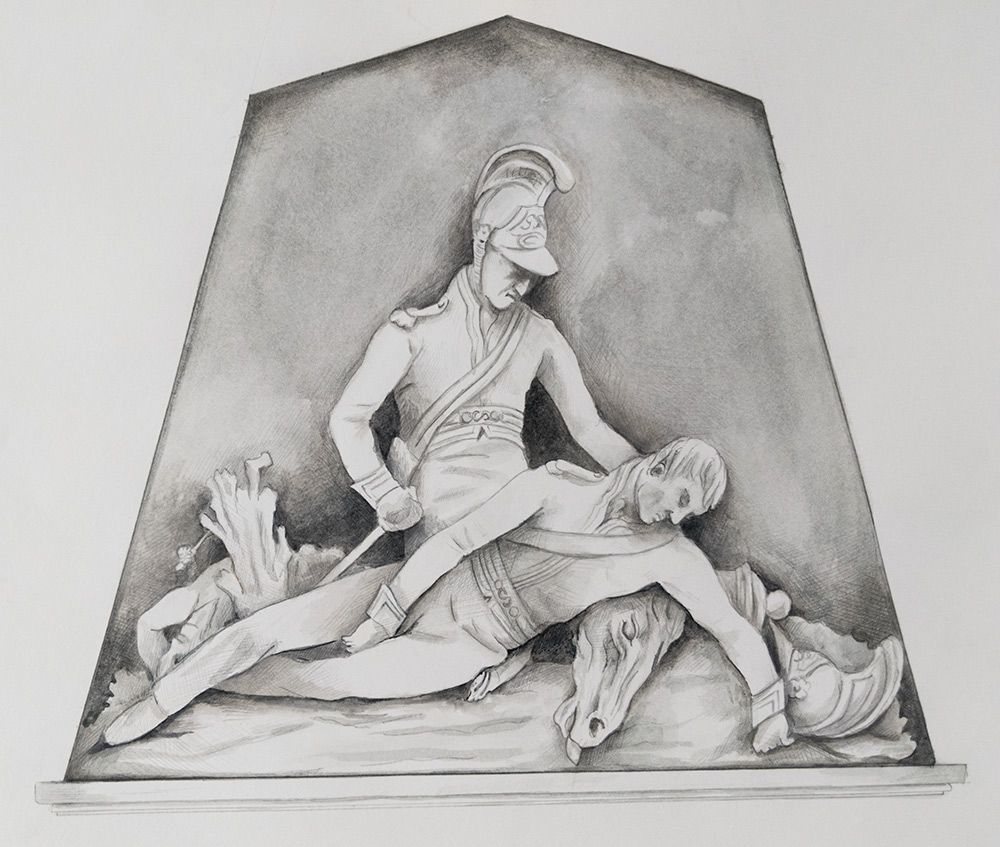Richard Christopher Packe
Major, Royal Horse Guard Blue
Robert Christopher Packe was born in 1783 in Prestwold Hall, Leicestershire, the son of Charles James Packe and Catherine Clifton. Prestwold Hall had been in the family since 1649 but was largely rebuilt by Robert’s father, who also created the surrounding park of 2,500 acres.
Educated at Eton, on leaving school, Robert joined The Royal Horse Guards Blue as a Cornet. He was soon promoted to the rank of Lieutenant and became Captain in 1804. Packe served with the Regiment in Spain and Portugal during the Peninsular War.
On the 21st May 1813, he was promoted to Major by the Duke of Northumberland. He was awarded the Penninsula Gold Medal or ‘Army Gold Medal’ in 1814 for his actions at the Battle of Vittoria in Spain. This medal, established in 1810, was only for issue to officers of the rank of Major and above who had distinguished themselves in action. Illustrated is the so called ‘small medal’, that would have been awarded to Packe. It was some 33mm in diameter, the name of the action – in this case Vittoria, would have been engraved on the back and the recipient’s name engraved around the rim.
Back in the regimental barracks at Windsor during 1814, Packe, with his regiment, commanded by Lieut-Colonel Robert Hill, was recalled to Europe with Napoleon’s return to France from the island of Elba in February 1815, and his triumphant entry to Paris on March 20th. At the ensuing Battle of Waterloo on June 18th 1815, the Royal Horse Guards Blue, although at this time not a Household Cavalry Regiment, on operations formed part of the 1st (Household) Cavalry Brigade, led by Major-General Lord Robert Edward Somerset.
Although close to the action, the Brigade was not involved in the Battle of Quatre-Bras on 16th June, but covered the rear of the column as the army retreated northwards, engaged in rear-guard actions. On the night of Saturday 17th June, one of heavy rain which turned the ground into a quagmire, they were encamped in the fields near the village of Mont-Saint-Jean, out of sight of the French army.
A Private Smithies of the Royal Horse Guards Blue wrote:
“For the first time ever known, the cavalry were ordered to grind the backs of their swords as we should have to use both sides. It was thought by the men that this order had been given because we had to contend with a large number of French Cuirassiers, who had steel armour, and through this we should have to cut.”
As the battle progressed on the 18th, seeing the French mounting a heavy attack on the farm of La Haye Sainte, Lord Uxbridge, the cavalry commander, sent the Household and Union Brigades to attack the French, the Household Brigade was to relieve the pressure on La Haye Sainte. Mistakenly, he omitted to order the reserve regiments in each Brigade to hold back – in the case of the Household Brigade it was the Royal Horse Guards Blue. As it was, all regiments charged forward, and the Royal Horse Guards Blue going to the west of the farm of La Haye Sainte engaged the French Cuirassiers. Packe was killed almost immediately, run through by a Cuirassier’s sword and suffering a deep cut to his head. He was buried on the battlefield.


Stationed in Windsor at the time, his fellow officers who held him in high regard, had a memorial to his name erected in St George’s Chapel Windsor. Originally in the Rutland Chapel (permission to erect it there was recorded in a Chapter Act of 16 April 1817) it was moved to its present position in the Ambulatory, to the left of the door into the Dean’s Cloister. The memorial features the white marble figures of the fallen Major Packe and his horse, mourned over by a regimental companion, on a grey marble background
Below it is the following inscription:
“To the memory of Major Robert Christopher Packe, second son of Charles James Packe esquire of Prestwold, Leicestershire, and Major in the Royal Regiment of Horse Guards Blue, who was killed at the head of his squadron when charging the French Cuirassiers at the ever memorable Battle of Waterloo on the 18th of June 1815 in the XXXIIId year of his age. This monument is erected by the officers of the regiment in which he had served more than fifteen years, in testimony of their high veneration for his distinguished military merit and of their sincere regret for the loss of a companion so long endeared to their affections by his amiable manners and private vertues”
His parents independently also erected a memorial to him in the church at Prestwold:

